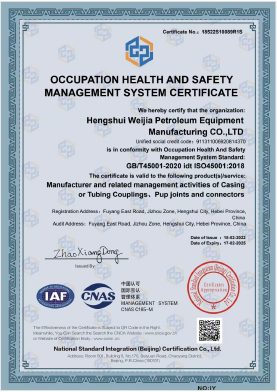- Afrikaans
- Albanian
- Amharic
- Arabic
- Armenian
- Azerbaijani
- Basque
- Belarusian
- Bengali
- Bosnian
- Bulgarian
- Catalan
- Cebuano
- Corsican
- Croatian
- Czech
- Danish
- Dutch
- English
- Esperanto
- Estonian
- Finnish
- French
- Frisian
- Galician
- Georgian
- German
- Greek
- Gujarati
- Haitian Creole
- hausa
- hawaiian
- Hebrew
- Hindi
- Miao
- Hungarian
- Icelandic
- igbo
- Indonesian
- irish
- Italian
- Japanese
- Javanese
- Kannada
- kazakh
- Khmer
- Rwandese
- Korean
- Kurdish
- Kyrgyz
- Lao
- Latin
- Latvian
- Lithuanian
- Luxembourgish
- Macedonian
- Malgashi
- Malay
- Malayalam
- Maltese
- Maori
- Marathi
- Mongolian
- Myanmar
- Nepali
- Norwegian
- Norwegian
- Occitan
- Pashto
- Persian
- Polish
- Portuguese
- Punjabi
- Romanian
- Russian
- Samoan
- Scottish Gaelic
- Serbian
- Sesotho
- Shona
- Sindhi
- Sinhala
- Slovak
- Slovenian
- Somali
- Spanish
- Sundanese
- Swahili
- Swedish
- Tagalog
- Tajik
- Tamil
- Tatar
- Telugu
- Thai
- Turkish
- Turkmen
- Ukrainian
- Urdu
- Uighur
- Uzbek
- Vietnamese
- Welsh
- Bantu
- Yiddish
- Yoruba
- Zulu
Versatile Coupling Tube Fittings for Efficient Fluid Transfer and Connection Solutions
Understanding Coupling Tube Fittings Essential Components in Fluid Systems
Coupling tube fittings are vital components in the realm of fluid systems, used extensively in various industries such as oil and gas, pharmaceuticals, food processing, chemical manufacturing, and many more. These fittings serve as connectors between two or more tubes, ensuring a leak-proof and secure junction that can withstand temperature fluctuations and pressure changes.
What are Coupling Tube Fittings?
At its core, a coupling tube fitting is designed to connect two lengths of tubing. They come in numerous styles and materials, allowing for compatibility with various types of tubing and fluid mediums. Most commonly, they are made from stainless steel, brass, or plastic, each providing different advantages in terms of strength, corrosion resistance, and cost.
The fundamental purpose of coupling tube fittings is to provide a reliable connection point that can be easily assembled and disassembled without damaging the tubing. This is crucial in applications where maintenance and repairs are necessary, allowing technicians to replace or repair sections of a piping system without needing extensive downtime.
Types of Coupling Tube Fittings
Coupling tube fittings can be categorized into several types based on their design and function
1. Compression Fittings These fittings use a compressive force to seal the joint. They are very popular for their ease of use and ability to create a tight seal without welding. Compression fittings often include a nut, a ring (or ferrule), and the fitting body itself.
2. Solder Fittings Used primarily in plumbing applications, solder fittings require the use of heat to join the fittings to the tubing. This type requires more skill to ensure a proper and leak-free joint.
3. Welded Fittings These fittings are permanently attached to the tubing using welding techniques. They are ideal for high-pressure applications but can be more challenging to replace if maintenance is necessary.
4. Flared Fittings Involving a conical flare at the end of the tubing, these fittings create a seal by tightening a nut over the flared end, making them highly effective for high-pressure applications.
coupling tube fitting

Applications of Coupling Tube Fittings
Coupling tube fittings are employed across multiple sectors due to their versatility and reliability. In the oil and gas industry, they facilitate connections that must endure extreme pressures and corrosive environments. Pharmaceutical manufacturing often requires strict hygiene standards; thus, stainless steel coupling tubes are preferred to minimize contamination risks.
In the food processing industry, coupling fittings ensure that systems maintain the integrity needed to transport various consumables without risk of contamination. Their ability to withstand cleaning processes and resist corrosion makes them indispensable.
Choosing the Right Coupling Tube Fittings
Selecting the appropriate coupling tube fittings depends on several factors
- Material Compatibility The chosen material must withstand the specific chemical nature of the fluids being transported. For instance, acidic conditions require fittings made out of materials that resist corrosion. - Pressure Rating Understanding the operating pressure of the system is crucial. Ensure that the selected fittings can handle the maximum pressure expected in the application.
- Temperature Limits Different materials have varying thresholds of heat resistance. Always check that the fittings can operate within the temperature ranges of the application.
- Size and Compatibility The diameter of the tubing should match the fitting size. Additionally, compatibility with existing systems should be verified if integrating new fittings into older systems.
Conclusion
In summary, coupling tube fittings play an integral role in effectively managing fluid transport across diverse industries. Their importance cannot be understated; they ensure safety, reliability, and efficiency in fluid systems. By understanding the types available and their applications, professionals can make informed decisions to maintain the integrity and functionality of their operations. As industries continue to evolve and innovate, the role of coupling tube fittings will remain critically important in the design and maintenance of fluid transfer systems.
-
Tubing Pup Joints: Essential Components for Oil and Gas OperationsNewsJul.10,2025
-
Pup Joints: Essential Components for Reliable Drilling OperationsNewsJul.10,2025
-
Pipe Couplings: Connecting Your World EfficientlyNewsJul.10,2025
-
Mastering Oilfield Operations with Quality Tubing and CasingNewsJul.10,2025
-
High-Quality Casing Couplings for Every NeedNewsJul.10,2025
-
Boost Your Drilling Efficiency with Premium Crossover Tools & Seating NipplesNewsJul.10,2025







